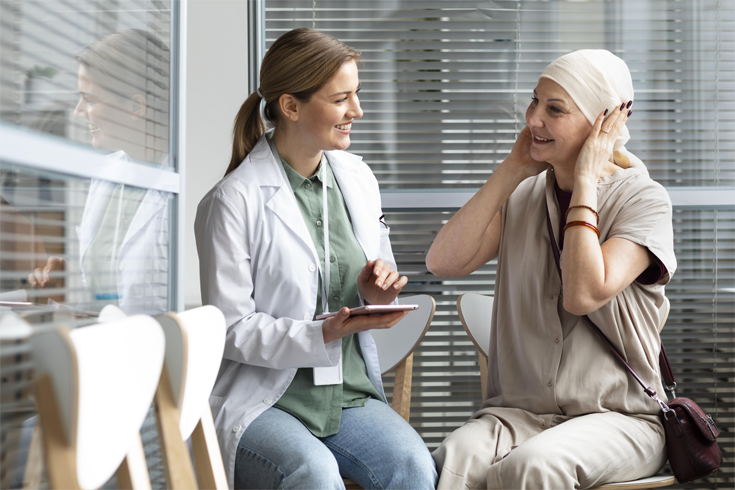Progress in understanding and treating breast cancer in recent years has been uplifting, to say the least. Just last year, findings by the Johns Hopkins Kimmel Cancer Center confirmed a strong link between diabetes and later stage diagnoses of breast cancer, suggesting that women with diabetes may be predisposed to more advanced stage breast cancers, which may account for their higher cancer mortality rate.
Recently, researchers have learned that your body’s immune system can actually work both for – and against you in fighting cancer. PhD research at the Netherland’s Cancer Institute shows some immune cells play a role in the spread of cancer (metastasis), while other cells could be activated to strengthen the effects of chemotherapy.
Why these cells act the way they do is still part of that investigation, and one ongoing at the University of Michigan. There, researchers used a cancer cell-interaction technique to map a protein which controls how breast cancer cells spread, and make themselves at home in other parts of the body. Those proteins (tyrosine kinase receptors) are implicated in many types of cancer, and from this data promising inhibitor treatments are being developed.
A blood test that spots cancer-linked DNA could soon be widely used to identify breast cancers at higher risk for recurrence, and also track the success or failure of treatment. This could help patients avoid potential side effects, cost and wasting precious time.
Until the research becomes reality, early detection continues to be our best bet for surviving breast cancer. The Breast Center of St. Mary’s Medical Center has earned the Women’s Choice Award as one of America’s Best Breast Centers, as well as accreditation by the National Accreditation Program for Breast Centers. We place a premium on care that can buy our patients that precious time, and best odds of beating a disease that effects one-in-eight women during her lifetime. It’s a team approach, and ladies, you are part of that team.
• Know your risk for breast cancer – it’s the first line of defense against the disease. St. Mary’s offers online risk assessment at stmarys.com to determine if you may be at risk of developing breast cancer. This survey takes very little time and provides you and your doctors valuable insight into your personal risk of breast cancer. If you answer yes to any of the questions, you may want to fill out a hereditary risk assessment also offered on our web site. This may also qualify you for high-risk genetic testing.
• Learn how to examine your own breasts – No matter your age, take a few minutes each month to determine if anything physically has changed.
• Get a mammogram – At present, mammography remains our best tool for early detection and increased survival rates. We’ve gone to a 3-D system to get the most out of this tool. The American Cancer Society recommends mammograms every year for women ages 40 and older. At St. Mary’s you can even walk-in for mammography services, Monday-Thursday, 8-11:30 a.m., and 1-4 p.m. and – you do not need a physician referral for screening mammography.
If a mammogram reveals any issues, you may be referred to further tests including:
• Breast ultrasound is an imaging technique using high frequency sound waves to scan the breast to locate and measure abnormal changes or lesions in the breast. This test also can determine if a breast lump is solid (tumor) or filled with liquid (cyst).
• Breast MRI captures multiple images of the breast generating detailed images, which display not only the size and shape of a lesion, but differentiate benign and malignant tissue.
• Galactogram is used in the cases where nipple discharge is present, to view breast ducts and diagnose breast cancer. Injections of a contrast material delivered into the duct reveal if the nipple discharge is the result of a lesion.
If any of these tests lead to a biopsy, you’ll have a certified Breast Patient Navigator to support you through the entire process. In 2017, an estimated 255,180 new cases of invasive breast cancer are expected to be diagnosed in women in the U.S., along with 63,410 new cases of the non-invasive variety.
Except for skin cancer, breast cancer is the most common cancer in women in this country. While deaths from breast cancer have declined over time, it remains the second leading cause of cancer death among women.
— Dr. Linda McCormick, D.O., is in Family Practice through St. Mary’s Medical Center and can be reached at 816-228-1000.


